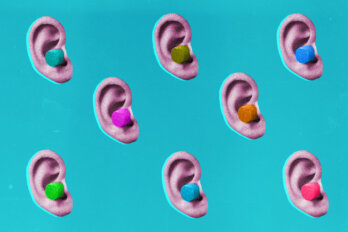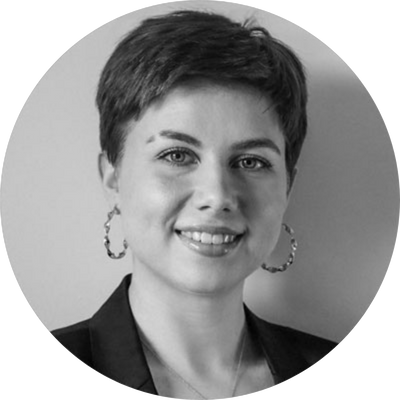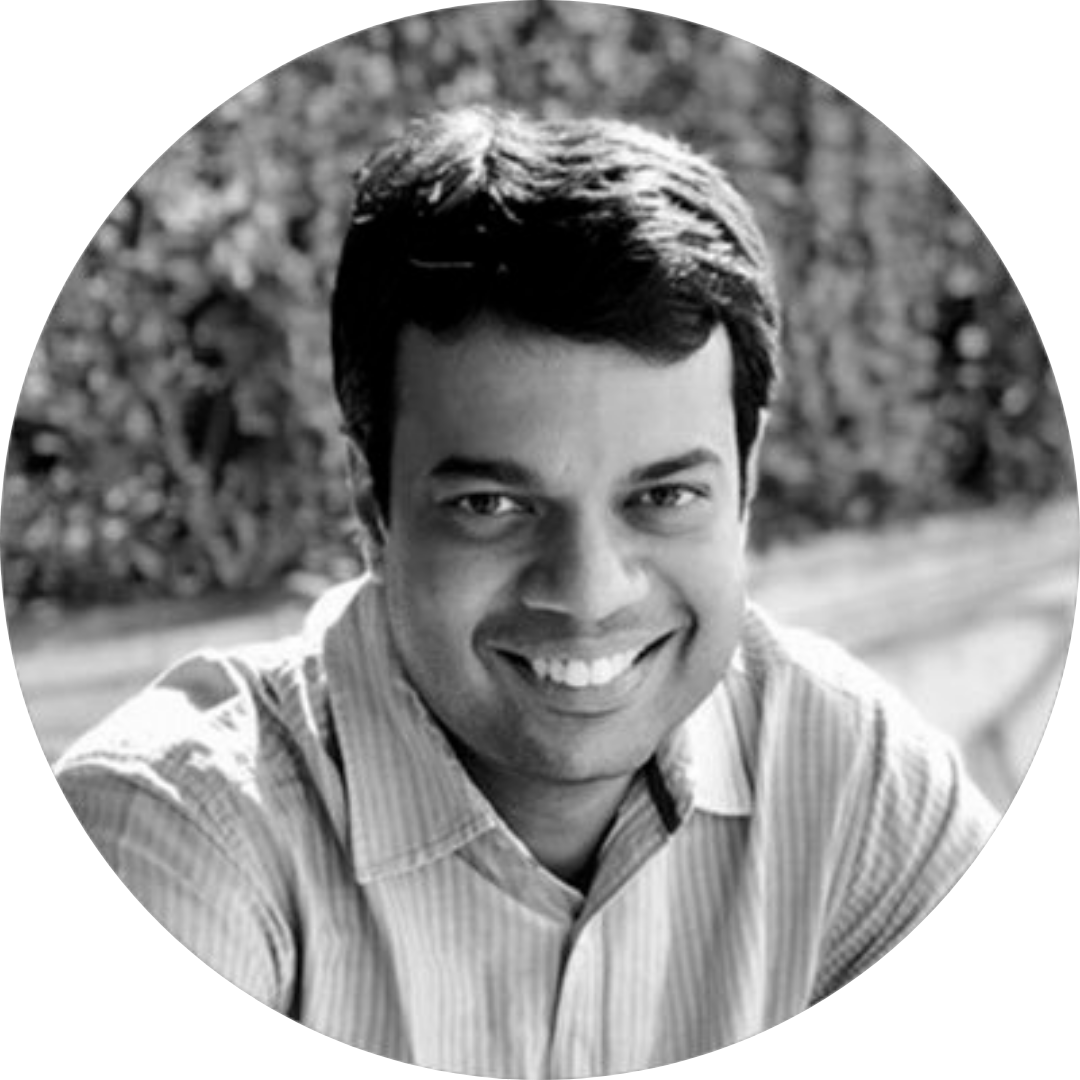In 2011 and 2012, I interviewed fifty-one black male police officers from the Greater Toronto Area (GTA), as part of a wide-ranging academic project aimed at surveying black attitudes toward the police. They spoke to me candidly but confidentially. I agreed not to publish their names or identifying details.
At one stage of my interviews, I asked these officers to put forth suggestions on how to improve relations between the police and the black community in the GTA. Given the robust public discussion that is now taking place in regard to the Black Lives Matter movement—and this month’s tragic killings of both innocent black men and police officers in the United States—it is worth exploring these suggestions in some detail. These suggestions are unique as they are informed by the officers’ experiences as black males and their immersion in police culture. Both perspectives are evident in the text below.
Not surprisingly, the first suggestion put forth by the officers I interviewed was that members of the black community be more co-operative and polite when dealing with police officers. As my broader findings highlighted, the officers believed that black people can be particularly hostile and confrontational when dealing with police officers—and this approach may lead to a negative response from officers and result in an overall poor interaction. An officer who I will refer to as Dale explained:
“I think it’s the approach, and just because you’re pulled over doesn’t mean you’ve done anything wrong, and it’s that initial approach sometimes . . . that aggressive initial approach, that causes each side to get their backs up, and then, you know, the interaction goes negative from there as opposed to saying, ‘Hey, officer, how are you doing today?’”
It is probably safe to say that very few people are pleased when they see the flashing lights of a police cruiser approaching them from behind. Nevertheless, as Dale noted, being stopped by the police does not necessarily mean that the officer intends to hand out a ticket or some other formal sanction. He felt that showing deference to an officer during an interaction rather than being hostile or rude would likely improve the outcome of that interaction for both parties, particularly the citizen.
Similarly, several respondents cautioned black people not to immediately assume that their race is the motivating factor influencing an officer to initiate an encounter. A number of respondents believed that black people play the “race card” in an attempt to get themselves out of trouble, or as an excuse when they have done something wrong. However, the respondents argued that doing so is likely to anger an officer who is initiating a legitimate encounter with a black citizen.
An officer who I will call Aaron told me: “Yeah, don’t give [officers] a hard time. Don’t say, ‘Oh, you’re just stopping me because I’m black’ or ‘Why are you stopping me’ [Don’t] be on the defensive because that kind of . . . makes him upset, right, especially if it’s a white officer stopping a black person and he’s not racist, right; and the guy says, ‘Oh, you’re stopping me because I’m black,’ right?”
In addition to angering the officer, which can have a negative impact on the outcome of the encounter for that citizen, making an immediate appeal to race and racism—especially when that individual knows they have done something wrong—weakens the claims of those people who are the legitimate victims of police racism and discrimination. It is also very unfair to the officer—white, black, or otherwise—whose actions were not motivated by race.
Furthermore, an officer who I will refer to as Phillip explained that it is unlikely that a citizen will win an argument or a fight against a police officer on the street: “Yeah, on the street you won’t win whether it’s physical or whether it’s verbal, confrontation or arguments . . . Save it for court. That’s where you do the fighting. Save it for court. Make lots of notes. Save it for court, you know, because . . . police officers are trained to win on the street because . . . it’s drummed in their head from the time they get hired to the time they go to the police college to the time they come back from police college: ‘If you lose on the street you’re going to die.’ So why would I lose on the street, you know, whether it’s verbal or otherwise, I can’t afford to lose. If I lose on the street, I won’t come home to my family, so why are you going to fight with a police officer verbally or otherwise on the street, right?”
Phillip’s statement gets at two key themes related to the policing of black people and black communities. First, is the perception of danger that motivates police action. As Phillip noted, officers are trained to sense danger, and react accordingly. By entering into a disagreement, a black citizen may heighten an officer’s already heightened sense of danger. Second is the perceived need to control citizen encounters and to maintain authority when dealing with members of the public. By entering into a disagreement with the police, a citizen is challenging the officer’s authority. Again, this is likely to result in the escalation of the police officer’s reaction, and perhaps prompt some sort of formal action or use of force.
Some officers suggested that abiding by the law and staying out of trouble is a way for black people to improve their perceptions of and interactions with the police. As an officer I will call Tony proposed: “I would say just walk the straight and narrow, and don’t get themselves in trouble. Stay positive.” This response aligns with one of my broader study findings, whereby officers attributed blacks’ negative perceptions of the police to their real and perceived increased levels of offending.
However, telling black people to abide by the law is of course more easily said than done, and the officer in question presented no concrete suggestions. Such a response also disregards the fact that most black people are not criminals, and negates the myriad social, political and structural factors that influence black people’s involvement in crime. In a sense, this response can also be viewed as a form of blaming the victim and a deflection strategy to take attention away from police bias. Nevertheless, a positive change in the outlook of black people may improve their interactions with the police. Perhaps helping black youth to question and deconstruct the negative stereotypes that associate blackness with crime may reduce offending rates, particularly amongst those who engage in crime as a form of defiance or resistance, thus reducing their chances of conflict with the law and their likelihood of encountering the police.
Finally, the respondents suggested that black communities would benefit from becoming more aware of the role and the function of the police. Some respondents felt that black citizens do not understand the role of the police, and are less able than white citizens to utilize them effectively.
Officers talked about recent immigrants. And it was suggested that people who have recently arrived in Canada should be provided with information about what the police do and when they should be called for service. Other officers suggested that this type of information should be provided to all Canadians and could be included in school curricula—in a civics class, for example.
Again, some people may find these suggestions simplistic, but many officers in the study felt that black people are more hesitant to engage and co-operate with the police. While some of this hesitance and lack of co-operation may come from antipathy toward the police and a perceived lack of agency in dealing with law enforcement officials, we cannot dismiss the possibility that some members of the black community do not know how to effectively utilize the services of the police. This may be especially true for immigrants and citizens who tend to view the police as an occupying army rather than a state entity intended to serve and protect.
Many officers acknowledged that improving relations between black communities and the police that serve them is going to take effort from both sides. “Sean,” for instance, commented: “I don’t know if one thing could solve all your problems and stuff like that, right, but you know what, I think it’s the constant effort being put forth by both groups, right?”
Sean is cognizant that improving relations will not be an easy task, as years of trying have made clear, but that innovative approaches and hard work may yield results. Part of this hard work would be to encourage more interaction between both parties.
There are a number of officers that encouraged more interaction and communication between black people and the police. As “Luis” told me, “communication, even when it’s confrontational, is better than no communication at all, so I don’t see how that could hurt.”
Confrontational interactions at community forums to which the police have been invited are of concern to police officials, who do not particularly appreciate these forums being used as venting sessions by angry members of the public. Instilling or developing a sense of mutual respect from both parties was also put forth as a suggestion to help bridge the gap between black people and the police. As “Eugene” articulated: “Respect needs to develop from both sides.”
The officers had more to say about how the police themselves could improve relations with the black community than they had suggestions for members of the general public. Importantly, many officers felt that the police must recognize that the onus is on them to improve the relationship they have with black communities.
As “Craig” explained: “I really think that the onus is on the police, and in order to do that I think, first off, the police have to accept that the onus is on them because right now I don’t think they accept that, you know. They think it’s a shared onus, right, and I don’t agree with that. Secondly . . . there has to be an attitudinal change in that whenever you’re working with the police—like this community policing and all of that—the police attitude is ‘we’ll let you be present but you don’t have much of a voice.’ You know, it’s my way or the highway type of thing. They have to change that, so consultations with members of the public have to be meaningful consultations, whereas even if the police disagree sometimes they have to implement the suggestions made to them.”
Craig made an interesting point, but it cannot be said that no one within the policing world acknowledges the role that the police must take in fostering relations with the public they serve. An important aspect of the police taking responsibility is the acceptance from officers on the ground. Even if police at the management and supervisory levels do acknowledge that the onus is on them, this message must be relayed to and accepted by front line officers who actually interact with members of the Toronto’s black communities.
Scholars who have studied this subject have pointed out that, although police officers do view themselves as public servants, these attitudes tend to be minimized when it comes to the policing of black communities. Craig, it would seem, agrees.
The respondents also urged police officers to provide members of the public with better treatment and more professional service provision. As “Jeremy” argues:
“We [should] focus on providing good customer service and interactions with people on all levels regardless of the circumstances . . . ’You’re being arrested. You know what, is there somebody that I can call for you’—all of those things that you would offer to anybody. The humanization of what we do—stop being so clinical with people or automatically assuming that because they made a mistake that they’re rotten to the core, or that they’re from a specific community that you have the right to speak to them in a certain way . . . If we started to focus on that and that became even a core element in the Police Services Act, then we get back to what we’re supposed to be doing.”
Jeremy called for the humanization of policing, and makes reference to the Police Services Act that not only lays out the code of conduct for police officers in the province of Ontario, but also mandates co-operation between police services and the communities they serve. Jeremy’s words also get to the importance of the social ecology of policing and what has been dubbed “ecological contamination,” whereby, as one scholar put it, “mere residence in a particular community becomes a liability for all residents.”
Some officers felt that the relationship between black people and the police could be improved if police officers were better able to see things from the perspective of the person they were interacting with, as “Allen” explained: “It goes back to the people piece, right? You have to deal with the people, so no matter what it is, what the issues are, you have to step out of your perspective and try and get onto the other side.”
Perspective or the ability to see things from the position of another individual is not necessarily something that can be taught, and may be most relevant as a suggested quality that police consider during the recruitment phase.
Nevertheless, if officers are able to keep an open mind in situations and not to make assumptions about an individual’s motives, as they have asked members of the black community not to do in regard to their own behavior, they will be better able to relate to the public.
Some of the respondents also made recommendations about police training measures that would help the police interact with the black communities that they serve. Specifically, the need for training in anti-oppression and cross-cultural communication was made clear by several officers who did not feel that current training for officers was adequate in these areas.
Anti-oppression training would help police officers become more aware of some of the factors that influence black people’s involvement in crime, and their contacts with the police. It would also help police officers understand things from the perspectives of the individuals that they encounter. Furthermore, an appreciation and understanding of some of the cultural nuances that contribute to negative interactions could also be provided through training.
“Tony” describes a component of training that he himself was once involved in: “At one time we used to go to the police college on a regular basis and speak to police officers on cross-cultural communications, and try to sensitize them to the various cultures of blacks and other groups, and it used to help, you know, because, for instance, people from the Caribbean . . . it’s different these days . . . but where I was brought up in Jamaica, it was a sign of disrespect . . . if my mom should be talking to me and I’m staring her in the face like this, you know, I would get a backhand across the face; ‘Ah, boy, what are you trying to do? Are you trying to stare me down or something?’ And that is construed as a sign of disrespect. So when blacks come here from the islands . . . they tend to look away. They don’t tend to stare them in the face, and sometimes the officers might say to them, you know, ‘Look, you’re so guilty you can’t even look me in the eyes.’ And we always have to tell these officers, ‘Look, it’s not that they’re guilty of anything, but this is the way they were brought up.’ ”
Helping police officers to become more aware of the immense power they hold over members of the public could also help reduce negative interactions. “Alan” provided an example of a role-playing exercise that could be conducted with officers at police training colleges:
“One thing I think would really be good is an exercise in the balance of power, the shifting of power, so I proposed once before and it would never get past any police association. You bring in a couple of young black youth to a police college, and you give a scenario so the black youth are the police officers, and you got police officers that are in the crowd. Any one of them could be the potential suspect of whatever these two black youth are investigating, so the youth then get to investigate the officers and search them if they see fit.”
Alan went on to explain that police officers conduct so many stops and searches that they become desensitized to the intrusive nature of such encounters: “By the time you’ve been on [the force] for any length of time you’ve probably searched thousands of people. You forget how intrusive that is. Now if you’re a young black person . . . if you’re anybody—it doesn’t matter what age or race—if you end up getting stopped twice a week and searched every time, that is very undignified, and you’re doing it in public. You know, people are walking by that you know think you’re a great kid or a great person and they see the cops . . . like what does that do to the psyche of the person? Right, so something like that just to remind officers of what that would feel like I think would be powerful. I don’t think you’d ever be able to get it passed through any service, but I think it would help.”
Being aware of how a member of the public feels when he or she is being patted down and having their pockets emptied might influence officers to be more respectful as they investigate potential suspects. The proposed exercise could be useful, but as Alan notes, it could be difficult to get the approval of police services to run such a scenario.
Respondents made numerous references about the benefits of community policing for improving the relationship between the police and black communities. Certain aspects of community policing, such as having more officers walk the beat in the neighbourhoods that they serve, were highlighted and viewed positively by respondents. Officers also proposed that police services and police officers become more involved in community events and participate in youth activities, such as coaching sports teams. A key aspect of developing good relations, respondents believed, is getting to kids while they are still young, before they have formed negative perceptions of the police.
Therefore, school liaison officers were also viewed positively by many of the respondents. In addition to helping young people develop positive views of the police, school liaison officers and officers who coach youth sports were also seen as role models for young people who might otherwise not have access to such figures.
Police recruitment and hiring was also put forth as a means of improving relations. First, officers believe that police services could do a better job of screening applicants to ensure they are allowing the right type of people to become police officers, as “Jeremy” explained:
“I think it sometimes goes back to, ‘Are we selecting the right type of people into the organization?’ and I’m talking personality-wise. We tend to attract people who are take-charge, very one-dimensional in terms of their problem solving ability. ‘Okay, this is what we’re going to do; you’re going to follow me,’ and quite often those people who lead cannot be led, and that’s one of our problems.”
Historically, policing has traditionally attracted individuals with authoritarian personalities, who were thought to be better able to command respect from the public and enforce the law. With the emergence of police professionalism, this line of thinking has changed and police services have for some time been recruiting individuals with a range of personality types. Respondents believe this trend will be beneficial.
Respondents also recommended that police services recruit more black officers to help improve black people’s views of the police. “Bernard” explained: “Well I think that’s a perception that will improve when those people that view the police as an occupying army and view the police as a suppressive group and a brutal group then they see their own going inside that group, they will follow.”
Bernard argues for the recruitment of more black officers, and while some services within the GTA have taken it upon themselves to draw more black officers into their ranks and to provide them with opportunities for advancement, others have not done such a good job.
(According to the data available to me in 2014, black officers were over-represented as sworn members in the York Regional Police Service: While only 2.2 percent of York residents self-identified as black in the 2006 census, almost 4.5 percent of York Regional Police officers were black—as of August 31, 2012. On the other hand, black officers were under-represented in both Durham and Toronto. The 2006 census reported that 6 percent of Durham residents were black, while a 2010 survey of Durham Regional Police officers indicates that 2 percent of the service was black—based on a 63 percent response rate. Likewise, black residents made up 8.4 percent of Toronto’s population in 2006, but only 5.7 percent of sworn officers in the Toronto Police Service as of 2012.)
It should be acknowledged, however, that simply hiring more black officers is unlikely to solve all of the problems facing black communities and their relationship with the police. As Edward Conlon, a former NYPD detective and author, notes: “Over time and in the main, cops tend to think like other cops, regardless of ethnicity.” Therefore, there is a need to change the way that police officers think and act, not just the colour of their skin.
Finally, some of the officers felt that there are changes that need to be made at a societal level if relations between black people and the police are to be made better. Part of this change includes improving the life chances and future prospects of black youth, as “Troy” explained:
“Because you fail to provide the kids with adequate support and knowledge and information and outlets, resources, community groups, community outlets, programming and stuff, the police get the end result because these kids have no direction, you know; and what are we taught to do—we’re taught to make sure people don’t break the rules.”
Troy, like many of his peers included in the study, was well aware of the social and structural problems facing black youth that result in their coming into contact with the police and conflict with the law. They argued that structural failures—in education and other social institutions—put black youth at increased risk of being involved in crime. Thus, if the myriad social and structural issues are dealt with, black youth will be more successful in life and less likely to have negative encounters with the police.
While this argument holds some validity, it is important to consider the statistics showing that even successful black men receive more police attention than their non-black counterparts. Addressing structural problems is just one goal; we must also change the way in which our society views and treats its black citizens. This latter point is particularly important. As agents of the state, the police can only operate within the “boundaries of political permission” afforded to the government by the people. A majority of the public and their representatives must, at least tacitly, agree with the status quo. In this case that blacks disproportionately suffer economically and politically while also featuring prominently in repressive state interventions such as policing and justice.
The police often act as flashpoints for social unrest. Indeed, reports into violent demonstrations commonly identify aggressive and discriminatory policing as key causes. It is clear that the call by organizations like Black Lives Matter to end violence against black people extends beyond the realm of policing to include state violence experienced as poverty and un(der)employment, inferior access to health care and education, and more generally through social and physical exclusion. These are renewed calls for “basic human rights and dignity” as protected by the Constitution, the Charter, and the Canadian Multiculturalism Act.






